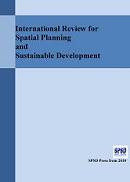Volume 5, Issue 2
Special Issues on the horizontal of research and methodologies on Sustainability in Asia
Displaying 1-9 of 9 articles from this issue
- |<
- <
- 1
- >
- >|
Special Issues on the horizontal of research and methodologies on Sustainability in Asia
-
2017 Volume 5 Issue 2 Pages 1-3
Published: April 15, 2017
Released on J-STAGE: April 15, 2017
Download PDF (152K) -
2017 Volume 5 Issue 2 Pages 4-16
Published: April 15, 2017
Released on J-STAGE: April 15, 2017
Download PDF (979K) -
2017 Volume 5 Issue 2 Pages 17-34
Published: April 15, 2017
Released on J-STAGE: April 15, 2017
Download PDF (1106K) -
2017 Volume 5 Issue 2 Pages 35-46
Published: April 15, 2017
Released on J-STAGE: April 15, 2017
Download PDF (252K) -
2017 Volume 5 Issue 2 Pages 47-59
Published: April 15, 2017
Released on J-STAGE: April 15, 2017
Download PDF (313K) -
2017 Volume 5 Issue 2 Pages 60-79
Published: April 15, 2017
Released on J-STAGE: April 15, 2017
Download PDF (1145K) -
2017 Volume 5 Issue 2 Pages 80-92
Published: April 15, 2017
Released on J-STAGE: April 15, 2017
Download PDF (766K) -
2017 Volume 5 Issue 2 Pages 93-103
Published: April 15, 2017
Released on J-STAGE: April 15, 2017
Download PDF (711K) -
2017 Volume 5 Issue 2 Pages 104-112
Published: April 15, 2017
Released on J-STAGE: April 15, 2017
Download PDF (309K)
- |<
- <
- 1
- >
- >|
